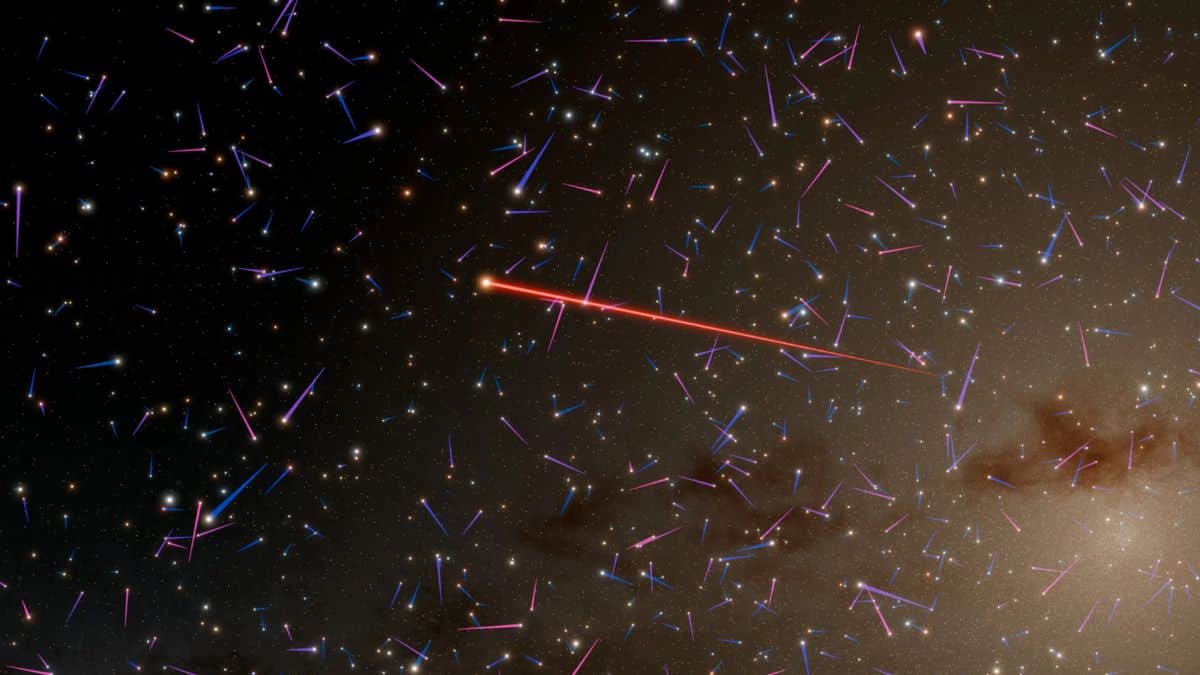Fastest Planetary System Discovered in Milky Way

A remarkable discovery in the cosmos has captured the attention of astronomers and space enthusiasts alike. A celestial object, possibly a small star accompanied by a massive exoplanet, has been observed racing through the Milky Way at an astonishing speed of over 1.2 million miles per hour. This extraordinary finding suggests that this could be the fastest planetary system ever detected. Initially identified in 2011 through a technique called microlensing, recent studies have linked this object to a newly identified star. However, uncertainties about its exact nature and velocity remain, prompting further investigation.
Potential Star and Exoplanet System Analyzed
A recent study published in The Astronomical Journal provides new insights into this celestial object. Researchers estimate that the star in question has about one-fifth the mass of our Sun and is located approximately 24,000 light-years away in the galactic bulge. If this star is indeed the same one observed during the 2011 microlensing event, calculations indicate it is moving at an extreme velocity. While the presence of an exoplanet has not yet been confirmed, scientists speculate that it could be a “super-Neptune.” This hypothetical planet might orbit the star at a distance similar to that of Venus or Earth in our Solar System. The implications of such a discovery are significant, as it could reshape our understanding of planetary formation and dynamics in extreme environments.
The study highlights the importance of microlensing as a tool for discovering distant celestial objects. This technique involves the bending of light by gravitational fields, allowing astronomers to detect objects that would otherwise remain hidden. As researchers continue to analyze the data, they hope to confirm the existence of the exoplanet and learn more about its characteristics. The potential for discovering new worlds in our galaxy excites scientists and the public alike, as each finding adds to the rich tapestry of our understanding of the universe.
Possibility of Escape from the Milky Way
The implications of this discovery extend beyond the immediate characteristics of the star and its potential exoplanet. If the speed of this stellar object exceeds 1.3 million miles per hour, scientists suggest it may eventually escape the gravitational pull of the Milky Way. This would mean that the star, along with its exoplanet, could venture into intergalactic space. Sean Terry, a postdoctoral researcher at the University of Maryland and NASA’s Goddard Space Flight Center, emphasized the significance of this finding. If confirmed, it would mark the first time a planet has been detected orbiting a hypervelocity star.
However, Terry cautioned that further observations are essential to verify the identity and trajectory of the object. The potential for a planetary system to escape its galaxy raises intriguing questions about the fate of celestial bodies in extreme conditions. It also opens up discussions about the possibility of life existing in such distant realms. As researchers continue to monitor the star’s movement, they hope to gather more data that could confirm or refute these exciting possibilities.
Uncertainties and Alternative Theories
Despite the excitement surrounding this discovery, uncertainties remain. David Bennett, a senior research scientist at the University of Maryland, noted that additional observations are necessary to determine whether this object is indeed the same one spotted in 2011. The research team plans to closely monitor the star’s movement over the next year to verify its trajectory. This ongoing investigation is crucial for understanding the nature of the celestial object and its potential exoplanet.
Another intriguing possibility is that the 2011 observation may have detected a rogue planet with an exomoon, rather than a star-exoplanet system. Aparna Bhattacharya, a research scientist at the University of Maryland, explained that if the object does not move as expected, the rogue planet hypothesis may gain more support. This alternative theory underscores the complexity of celestial dynamics and the challenges researchers face in interpreting their findings. As the team continues its observations, they remain hopeful that new data will shed light on the true nature of this mysterious object and its place in the cosmos.
Observer Voice is the one stop site for National, International news, Sports, Editor’s Choice, Art/culture contents, Quotes and much more. We also cover historical contents. Historical contents includes World History, Indian History, and what happened today. The website also covers Entertainment across the India and World.

